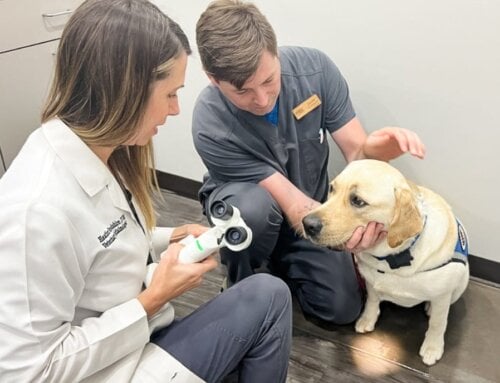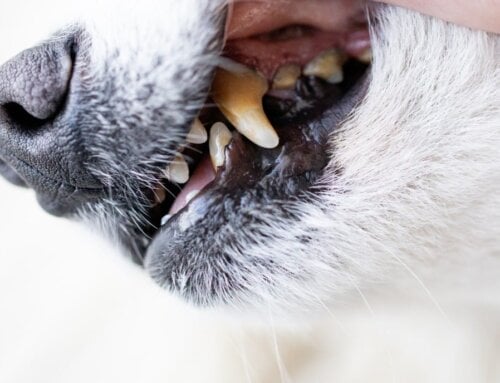Warm weather has arrived in Hampton Roads. That means we’ll be ramping up the fun factor when it comes to outdoor play for us—and our pets. Just as you would protect yourself against summer’s sizzling rays and temperatures, we should also take similar precautions on behalf of our canine and feline friends. We did a little sleuthing and discovered some great protective gear—and advice—that will keep your critters covered, healthy and happy in the sunny months ahead.
 Sunscreen – We’d heard about sunscreen for pets, but were not familiar with products to try. We turned to local veterinary dermatologist, Dr. Marlene Pariser with Coastal Virginia Veterinary Dermatology, for advice. She recommended a product by Dermoscent called SunFREE moisturizing sunscreen*. It has an SPF of 30+ and is certified UVA/UVB rays. It’s non-sticky and ideal for dogs and cats with fragile skin, while providing hydration. *Please inquire with your primary or specialty veterinarian for local product availability of Dermoscent’s SunFREE sunscreen.
Sunscreen – We’d heard about sunscreen for pets, but were not familiar with products to try. We turned to local veterinary dermatologist, Dr. Marlene Pariser with Coastal Virginia Veterinary Dermatology, for advice. She recommended a product by Dermoscent called SunFREE moisturizing sunscreen*. It has an SPF of 30+ and is certified UVA/UVB rays. It’s non-sticky and ideal for dogs and cats with fragile skin, while providing hydration. *Please inquire with your primary or specialty veterinarian for local product availability of Dermoscent’s SunFREE sunscreen.

 Dog goggles – Some dog owners like goggles to keep airborne debris and sand out of their pet’s eyes, and to protect them from the sun’s bright rays. They can also help to shield your dog’s eyes when they swim. We recommend the Doggles and Rex Specks brands in the sunglasses version to owners of dogs with Iris atrophy. This condition is seen in many older animals. It allows too much light to reach the back of the eye, causing squinting and discomfort. If dogs don’t tolerate wearing these, we typically recommend that owners keep their pets out of the sun during the brightest times of the day (from 12-3 pm).
Dog goggles – Some dog owners like goggles to keep airborne debris and sand out of their pet’s eyes, and to protect them from the sun’s bright rays. They can also help to shield your dog’s eyes when they swim. We recommend the Doggles and Rex Specks brands in the sunglasses version to owners of dogs with Iris atrophy. This condition is seen in many older animals. It allows too much light to reach the back of the eye, causing squinting and discomfort. If dogs don’t tolerate wearing these, we typically recommend that owners keep their pets out of the sun during the brightest times of the day (from 12-3 pm).
 Booties – If the sidewalk is too hot for your bare tootsies, it’s too hot for your pet’s paws. Invest in a pair of booties to make sure they can walk safely on warm-to-hot surfaces. In addition to providing heat protection, these “shoes” will protect them on snow and ice too (in about six months).
Booties – If the sidewalk is too hot for your bare tootsies, it’s too hot for your pet’s paws. Invest in a pair of booties to make sure they can walk safely on warm-to-hot surfaces. In addition to providing heat protection, these “shoes” will protect them on snow and ice too (in about six months).
 Body suits – Yes, this is a thing. Body suits can protect against UV rays for short-haired dogs that are prone to sunburn. In addition, these cover-ups will keep sand out of their fur and ticks at bay. In case you’re wondering, the unisex design allows them to “go” without having to unzip or remove the suit. K9 Topcoat offers a variety of options for suiting up your pups.
Body suits – Yes, this is a thing. Body suits can protect against UV rays for short-haired dogs that are prone to sunburn. In addition, these cover-ups will keep sand out of their fur and ticks at bay. In case you’re wondering, the unisex design allows them to “go” without having to unzip or remove the suit. K9 Topcoat offers a variety of options for suiting up your pups.
 Protection against pannus – Did you know that ultraviolet radiation can increase the severity of pannus in dogs? Also known as chronic superficial keratitis, pannus is a progressive inflammatory autoimmune disease of the cornea. If left untreated, the condition can lead to scarring of the surface of the eye and may progress to severe visual impairment or blindness. Dogs living in very sunny areas (hello Hampton Roads) and at high altitudes are prone to the disease. In addition to limiting their time in the sun, you can also have your dog wear goggles as an extra precaution. (Check our previous In Focus blog post for more info on pannus.)
Protection against pannus – Did you know that ultraviolet radiation can increase the severity of pannus in dogs? Also known as chronic superficial keratitis, pannus is a progressive inflammatory autoimmune disease of the cornea. If left untreated, the condition can lead to scarring of the surface of the eye and may progress to severe visual impairment or blindness. Dogs living in very sunny areas (hello Hampton Roads) and at high altitudes are prone to the disease. In addition to limiting their time in the sun, you can also have your dog wear goggles as an extra precaution. (Check our previous In Focus blog post for more info on pannus.)
 A shady respite and H20 – When you are outdoors with your pets this summer, make sure they have easy access to a shade (trees, beach umbrella, tarp) in which they can rest and regroup. Direct sunlight can overheat them (especially brachycephalic or short-nosed dogs) and lead to hyperthermia and heat stroke. These are serious conditions that can occur when your dog’s natural ability to regulate temperature by panting can’t keep up with elevated external temperatures and high humidity.
A shady respite and H20 – When you are outdoors with your pets this summer, make sure they have easy access to a shade (trees, beach umbrella, tarp) in which they can rest and regroup. Direct sunlight can overheat them (especially brachycephalic or short-nosed dogs) and lead to hyperthermia and heat stroke. These are serious conditions that can occur when your dog’s natural ability to regulate temperature by panting can’t keep up with elevated external temperatures and high humidity.
 Never leave your pet alone when it’s hot! – The previous tip is a good transition to our parting advice: Never leave your pet alone outside or in a parked car when it’s hot. Non fever-related hyperthermia can develop when a dog’s body temperature is above 103°F. Heat stroke is more severe, appearing at an elevated temperature of 106°F. These conditions are most likely to occur when a dog is in a small, hot space without ventilation, such as a car, or outside for too long on a hot day without access to shade and water. If it’s too hot for you, then it’s too hot for your pet.
Never leave your pet alone when it’s hot! – The previous tip is a good transition to our parting advice: Never leave your pet alone outside or in a parked car when it’s hot. Non fever-related hyperthermia can develop when a dog’s body temperature is above 103°F. Heat stroke is more severe, appearing at an elevated temperature of 106°F. These conditions are most likely to occur when a dog is in a small, hot space without ventilation, such as a car, or outside for too long on a hot day without access to shade and water. If it’s too hot for you, then it’s too hot for your pet.


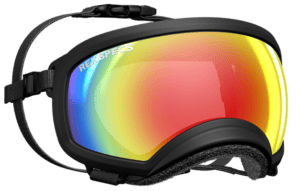

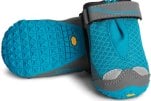 Booties – If the sidewalk is too hot for your bare tootsies, it’s too hot for your pet’s paws. Invest in a pair of booties to make sure they can walk safely on warm-to-hot surfaces. In addition to providing heat protection, these “shoes” will protect them on snow and ice too (in about six months).
Booties – If the sidewalk is too hot for your bare tootsies, it’s too hot for your pet’s paws. Invest in a pair of booties to make sure they can walk safely on warm-to-hot surfaces. In addition to providing heat protection, these “shoes” will protect them on snow and ice too (in about six months).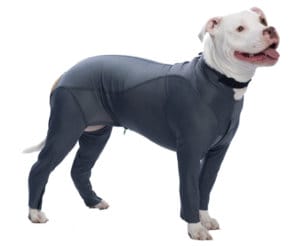

 A shady respite and H20 – When you are outdoors with your pets this summer, make sure they have easy access to a shade (trees, beach umbrella, tarp) in which they can rest and regroup. Direct sunlight can overheat them (especially brachycephalic or short-nosed dogs) and lead to hyperthermia and heat stroke. These are serious conditions that can occur when your dog’s natural ability to regulate temperature by panting can’t keep up with elevated external temperatures and high humidity.
A shady respite and H20 – When you are outdoors with your pets this summer, make sure they have easy access to a shade (trees, beach umbrella, tarp) in which they can rest and regroup. Direct sunlight can overheat them (especially brachycephalic or short-nosed dogs) and lead to hyperthermia and heat stroke. These are serious conditions that can occur when your dog’s natural ability to regulate temperature by panting can’t keep up with elevated external temperatures and high humidity. Never leave your pet alone when it’s hot! – The previous tip is a good transition to our parting advice: Never leave your pet alone outside or in a parked car when it’s hot. Non fever-related hyperthermia can develop when a dog’s body temperature is above 103°F. Heat stroke is more severe, appearing at an elevated temperature of 106°F. These conditions are most likely to occur when a dog is in a small, hot space without ventilation, such as a car, or outside for too long on a hot day without access to shade and water. If it’s too hot for you, then it’s too hot for your pet.
Never leave your pet alone when it’s hot! – The previous tip is a good transition to our parting advice: Never leave your pet alone outside or in a parked car when it’s hot. Non fever-related hyperthermia can develop when a dog’s body temperature is above 103°F. Heat stroke is more severe, appearing at an elevated temperature of 106°F. These conditions are most likely to occur when a dog is in a small, hot space without ventilation, such as a car, or outside for too long on a hot day without access to shade and water. If it’s too hot for you, then it’s too hot for your pet.










